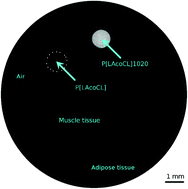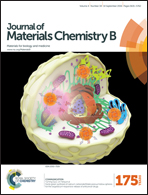Biodegradable fiducial markers for X-ray imaging – soft tissue integration and biocompatibility
Abstract
This study aims at the development of materials for biodegradable fiducial markers for X-ray based medical imaging and their anchorage in soft tissue. Towards this goal a degradable polymer matrix of poly(L-lactide-co-ε-caprolactone) (P[LAcoCL]) was combined with barium sulfate (BaSO4) and hydroxyapatite (HAp) as radio-opaque fillers. Low pressure plasma treatment was applied to the composite materials to improve cell adhesion and subsequent tissue integration. In particular, the effects of oxygen and ammonia plasmas were evaluated and compared using X-ray photoelectron spectroscopy, atomic force microscopy and dynamic water contact angle measurements as well as in vitro studies using the murine fibroblast cell line L929. To exclude the cytotoxic effects of degradation products of P[LAcoCL] and released BaSO4 or HAp cytotoxicity assays with the degradation products of the composite materials were conducted. The results obtained by this broad range of analytical techniques suggest the application of composites of P[LAcoCL] with BaSO4 and HAp as promising material systems for innovative fiducial markers for soft tissue in X-ray based medical imaging.


 Please wait while we load your content...
Please wait while we load your content...